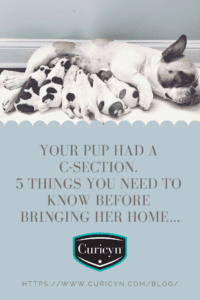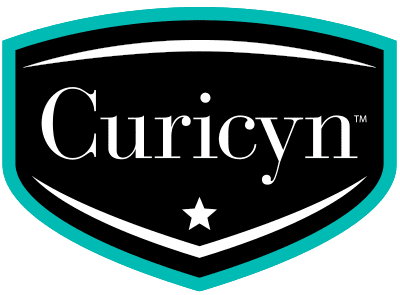Your pup had a C-section. 5 things you need to know before bringing her home…

Your fur baby just had puppies, but she had a C-section. Now, you are not only bringing home cute little bundles of fur, but you are also bringing home your girl who just went through major surgery. You leave the veterinarian’s office excited about the babies, but anxious about taking care of mama. Here are 5 things you need to know before bringing her home…
-
Read through all the paperwork from your vet about your pup’s C-section
After a C-section, the veterinarian will send you home with paperwork. Even though they go over the home care instructions with you, take time to carefully read through them again. The instructions will include information you need to know about food and water, exercise, grooming, the surgery site, medications, the sutures, and the follow-up appointment. Equally important, they will include specific things to watch for that could indicate your pup is having a problem.
-
Mama needs a comfortable and safe home space after a C-section
Remember a C-section is major surgery. Consequently, mama needs to be comfortable and away from noise and distractions. This will not only help with her recovery but will also help her bond and nurse her babies. Some people use a whelping box, which is a container designed with sides high enough to contain the puppies, yet low enough to allow mama to easily come and go comfortably. If other dogs are in the house, mama may be more comfortable with her babies in a puppy pen. Whichever one you choose, the space needs a comfortable whelping box washable liner mat.
-
Set a medication reminder on your phone
A variety of medications may be sent home for mama after a C-section. These can include antibiotics, meds for post op/pain management, and/or meds to aid in increasing milk production/milk letdown. Undoubtedly, it is easy to get absorbed with puppy cuteness and lose track of mama’s medication schedule. Setting a reminder on your phone will help keep giving meds on track. In addition to this, you can have your phone remind you if the meds need to be taken with or without food.
-
Mama needs to have her food and water monitored
When mama comes home, offer her small amounts of food and water frequently for the first day. Make sure she doesn’t eat too fast or it can make her vomit. Don’t worry if she is eating a lot, her food intake should be about one-and-a-half times what she normally eats (Ward, n.d.). In addition, as the babies grow, so will her appetite. While some vets may suggest feeding mama a puppy food, others recommend dog food. Take into account, puppy food is high in protein and basic nutrients and will help your dog gain that much needed weight after giving birth. In either case, a high quality, premium brand should be used in order to provide the appropriate nutrition for mama and her litter.
-
Remain calm and attentive
Your biggest part of mama’s recovery is to remain calm. Remember, if you are stressed, mama will be stressed. At the same time, it is important to be attentive to what is going on with your pup. Watch for any behavior changes, loss of appetite, vomiting, diarrhea, any discharge, or straining to urinate or defecate. Contact your vet if you see any of these signs. In addition, have a bottle of Curicyn Original Formula Spray wound treatment, skin care and wash on hand. It helps reduce inflammation, promotes rapid healing, and addresses bacteria at its source, making it an excellent choice for spraying on mama’s incision area. To add to that, Curicyn’s prices are exceptional. Pick a bottle up at your local Curicyn retailer or order online and get free shipping in the continental US.
In conclusion, considering these 5 things when bringing home your pup after a C-section should benefit both you and your mama pup and those precious bundles of fur.
References
Lazhar, I., (May 7, 2018). Top 10 dog breeds that commonly need c-sections. Breeding Business. Retrieved from https://breedingbusiness.com/cesarean-sections-dog-breeds/
Greer, M. (April 20, 2016). Tips for planning your bitch’s c-section. American Kennel Club. Retrieved from https://www.akc.org/expert-advice/dog-breeding/planning-your-bitchs-c-section/
Miller, J. (May 21, 2019). How to care for dogs recovering from surgery or an injury. Your Dog Advisor. Retrieved from https://yourdogadvisor.com/dog-surgery/
Ward, E., (n.d.). Cesarean sections in dogs – post-operative instructions. VCA. Retrieved from https://vcahospitals.com/know-your-pet/caesarean-sections-in-dogs-post-operative-instructions
Soares, X. (March 29, 2018). Cesarean sections in dogs – guide, price, benefits, risks & recovery. Breeding Business. Retrieved from https://breedingbusiness.com/cesarean-sections-in-dogs/
Wikipedia contributors. (February 10, 2019). Whelping box. Wikipedia. Retrieved from https://en.wikipedia.org/wiki/Whelping_box
